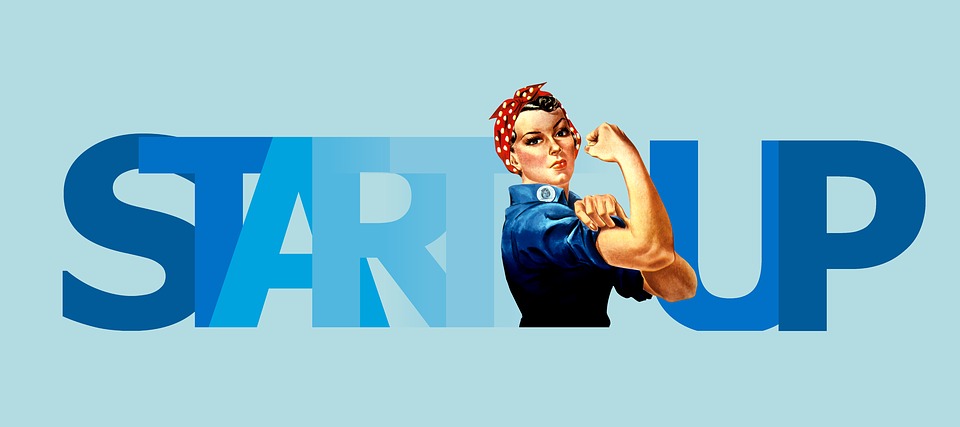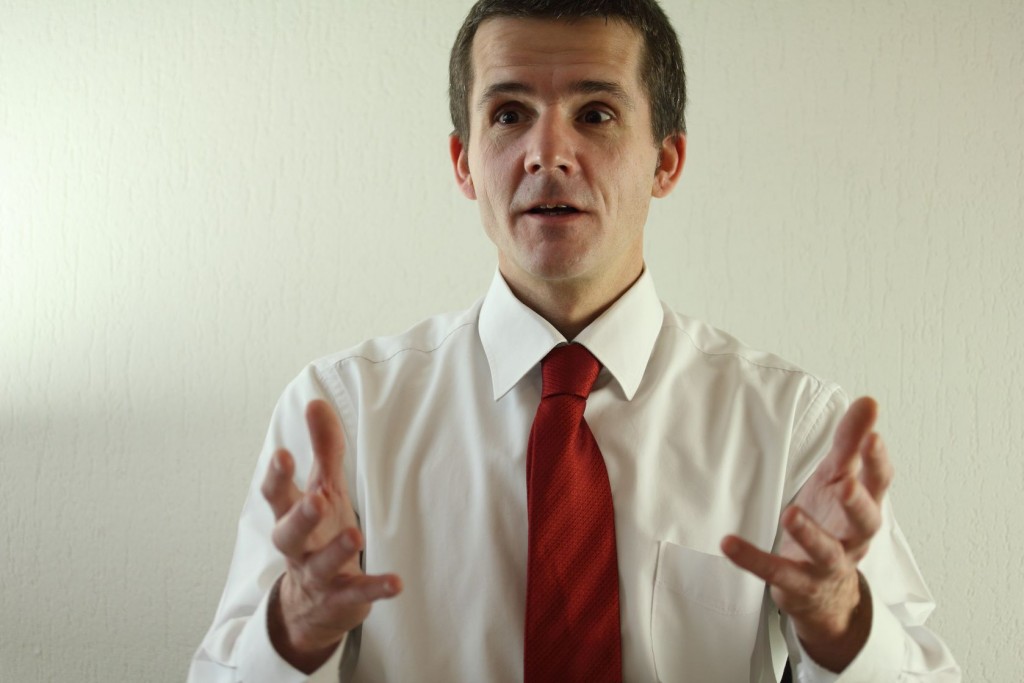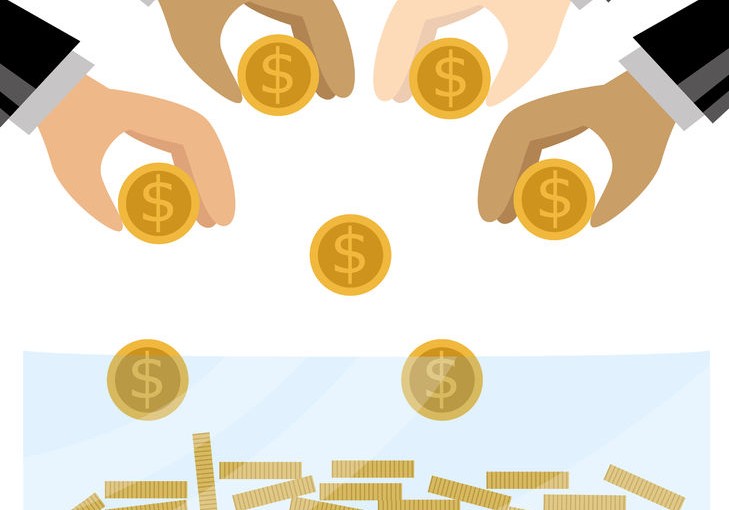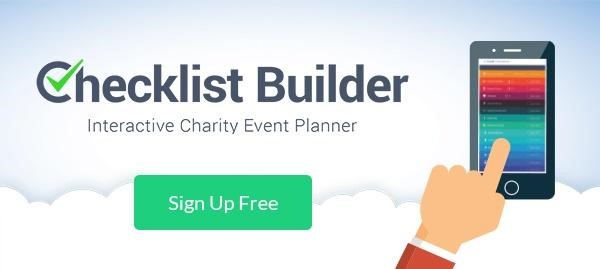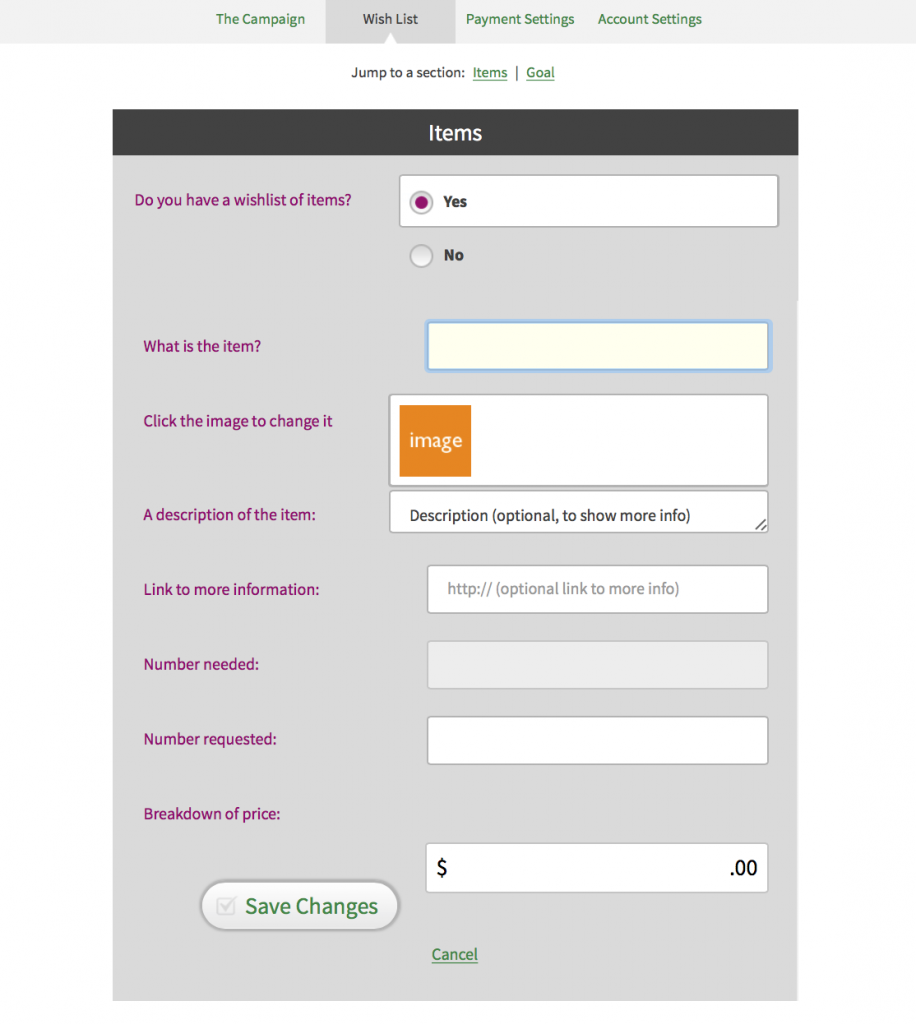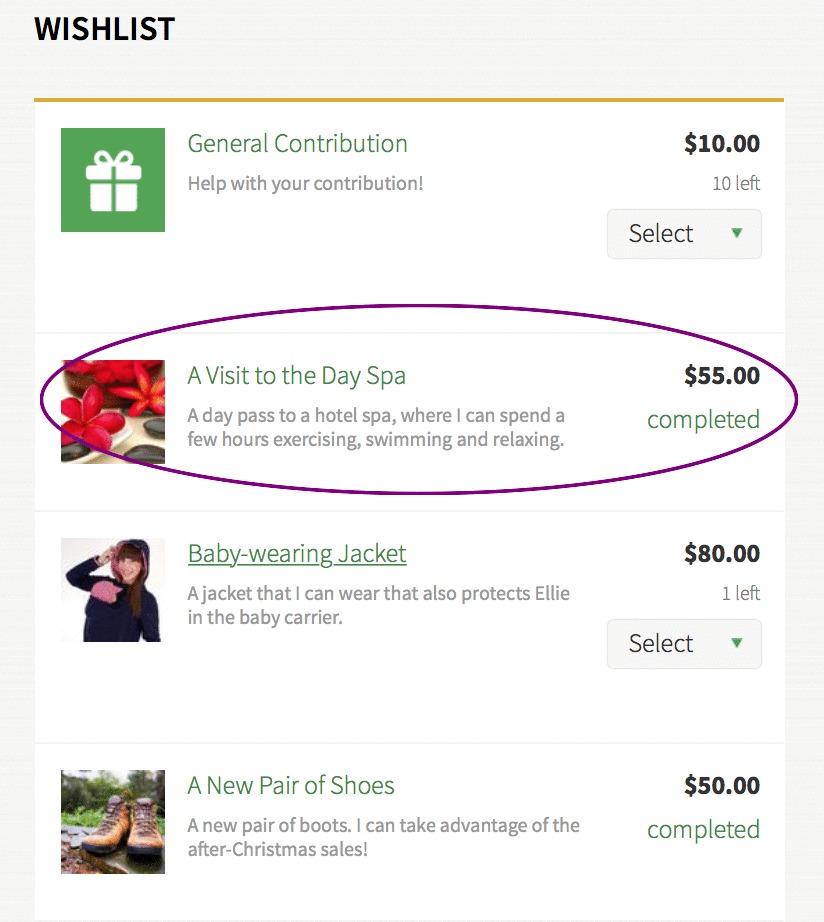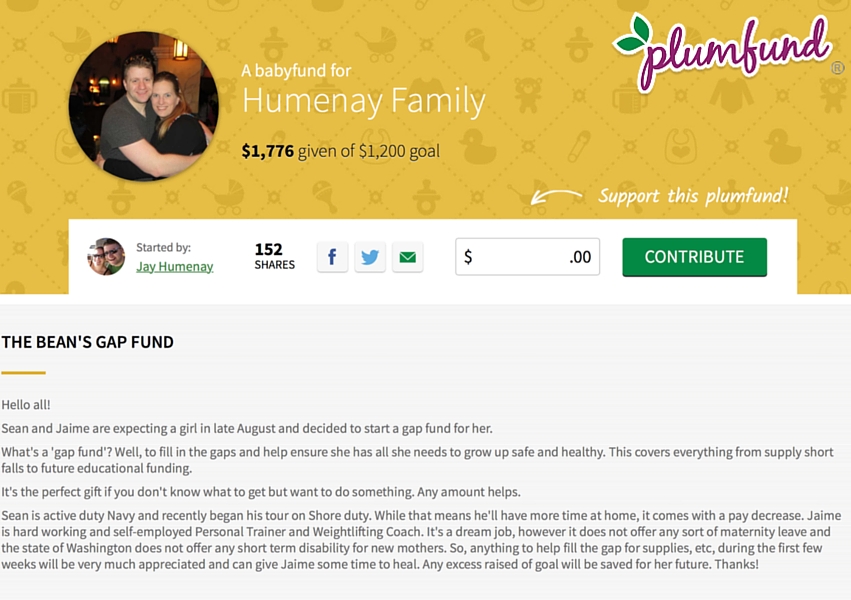100 years ago raising money for a new business, invention, or even a loved one in need was hard.
In order to successfully find and raise “real money” you typically had to know the right people…
And depending on where you lived and who you were, knowing the right people wasn’t always possible.
Luckily, in 2017, the situation isn’t so grim.
Ever since the inception of online crowdfunding, it’s become easier than ever before to raise boatloads of cash (for any cause) in a relatively short amount of time.
However, with the so many crowdfunding sites to choose from, the task of finding the right crowdfunding site for your specific needs can feel overwhelming.
But don’t worry, we’ve got you covered.
We’ve compiled a list of the 26 best crowdfunding sites from around the web.
Whether you are looking to build a school in Africa, raise capital for a new startup, or just need some help paying for your child’s medical expenses, we will help you find the platform that will fit your needs.
Let’s dive in.
26 Top Crowdfunding Sites
1. Kickstarter
If you are familiar with the crowdfunding world, then it should come at little surprise that Kickstarter is at the front of our list. Founded in 2009, Kickstarter was created to “Help bring creative projects to life.” And during their short tenure in business, they have accomplished this goal admirably.
Kickstarter has been the proud home to many impressive projects from innovative smartwatches to gaming platforms to “smart” sleep technology.
But one of the coolest features of Kickstarter is how they enable campaigns to raise money.
In lieu of traditional fundraising, Kickstarter allows you to offer unique “Investor Perks” in exchange for funding.
So, for example, if you decided to use Kickstarter to help fund a new coffee machine that you designed, you would offer investors tiered perks ranging from a handwritten “Thank You” card all the way up to a limited edition machine with a custom made design.
Who Should Use Kickstarter?
A quick scroll through the “Popular” section of Kickstarter’s website will tell you everything you need to know about who their ideal user is.
Their website is filled to the brim with creative new gadgets, compelling novels, stunning photography projects, and exciting new video games.
Basically… If you have a creative idea but lack the funds to help it see the light of day, Kickstarter is perfect for you.
And if you aren’t a creative-type? Then you should probably keep reading through this list.
They expressly prohibit fundraising for any charity, political campaign, agricultural products, medical technologies, and non-inventive personal projects.
What Are the Fees and Funding Process Like?
You know the old saying “Better to shoot for the moon and hit a stump than to aim for a stump and miss”?
Yeah… You should probably ignore that advice when using Kickstarter.
With Kickstarter, your projects operate on an all or nothing basis. Meaning that if you set the goal of raising $25,000 in 30 days and you only raise $24,999… You don’t keep a penny.
As far as fees are concerned, Kickstarter takes 5% of everything that you raise (the industry average) and their payment processor takes another 3-5% depending on the amount in question.
2. GoFundMe
Launched in 2010, GoFundMe is the world’s largest social fundraising platform boasting 40+ million users and over $4 billion in total capital raised.
Whereas Kickstarter is the perfect platform for blossoming geniuses and soon-to-be prolific creatives, GoFundMe is ideal for anyone with a charitable cause or personal need.
Unlike Kickstarter, GoFundMe doesn’t rely on creative perks and ethical bribes to raise money.
Their platform is built entirely upon compassion and storytelling.
If you have a genuine need and know how to share it in a compelling way, GoFundMe can help you raise more money in a month than most people could earn in a year.
Who Should Use GoFundMe
GoFundMe is, first and foremost, a charitable fundraising platform.
This fact was well illustrated when, only four short days after the Las Vegas massacre, GoFundMe users banded together and raised almost $10,000,000 to support the victims of the tragedy and their families.
And while GoFundMe has raised billions of dollars for charitable organizations they have also become well known in the industry for charitably serving individuals.
GoFundMe has helped families raise money for their children’s cancer treatment, funded the rehabilitation of public parks and nature reserves, and even helped send a World War II veteran on a trip around the world.
What Are the Fees and Funding Process Like?
Like Kickstarter, GoFundMe charges a 5% fee, their payment processor charges another 2-3%. However, unlike Kickstarter, GoFundMe doesn’t have an “All or Nothing” policy; even if you do miss your goal, you can still keep the funds that you raised.
3. Plumfund
While this might be shameless self-promotion, we have worked hard to build the world’s best FREE online “crowd-gifting” platform, and we are pretty darn proud of it!
We designed our platform to ensure that people could make their dreams happen without paying ridiculous fees, and since we launched Plumfund a few years ago, we have helped people raise more than $500,000,000 in charitable crowd gifting!
Who Should Use Plumfund?
Plumfund is designed for anyone who is looking to raise money for a project but doesn’t love the idea of directly asking friends, family, and next door neighbors for a donation.
With our platform, you can set up your own Plumfund in a matter of minutes to raise money for birthday parties, anniversaries, honeymoons and charitable projects.
If you want a crowdfunding platform that has a proven track record, is free to use, and makes giving and receiving FUN, then Plumfund is the site for you.
What are the Fees and Funding Process?
Plumfund is completely free for all users and the only thing you have to pay for is the 2.8% + $0.30 payment processor charge.
You don’t have to hit any goals in order to keep your funds either. What is yours is yours, and with Plumfund, it stays that way.
4. Indiegogo
Founded one year before Kickstarter in 2008, Indiegogo has raised more than $1 billion from more than 11 million contributions and they aren’t slowing down anytime soon.
The great thing about Indiegogo is that they don’t really have one particular specialty.
Kickstarter is great for new inventions, GoFundMe is great for personal and charitable support, and Indiegogo is great for either one!
Successful Indiegogo campaigns have included biometric door handles, funding for community animal shelters, and (my personal favorite) the upcoming movie, Super Troopers 2.
Who Should Use Indiegogo?
Although Indiegogo is technically a jack of all trades, I have noticed that the most successful campaigns tend to be very innovative in nature.
Sure they showcase plenty of charitable campaigns for community projects, human rights, and even environmental conservation, but their bread and butter lies in the world of technology and art.
If you are trying to launch a new product or idea but can’t find the funding for it, Indiegogo allows you to do so without having to hit a specific deadline (which we will talk about in a minute).
If you are trying to raise money for a personal or charitable reason, you certainly shouldn’t count Indiegogo out, but I would strongly recommend looking into a platform like GoFundMe or Plumfund first.
What are the Fees and Funding Process?
Unlike Kickstarter, Indiegogo doesn’t have a stringent “All or Nothing Policy”. Instead, they offer two types of campaigns, fixed and flexible funding.
Fixed funding is used whenever you have a specific amount of money that you must raise in order to keep your promise to donors (e.g. you need a set amount of capital to cover production costs and deliver a product)
Flexible funding, on the other hand, allows you to create a campaign where you keep all of your money so long as you can send donors the promised perks.
Regardless of the campaign that you use, you will be charged a base fee of 5% to use Indiegogo’s platform and you will be charged an additional processing fee of 3% plus $0.30.
However, if you are creating a campaign for charitable purposes, you can use Indiegogo’s platform “Generous” to create a fundraiser with a 0% platform fee.
5. Crowdrise
Unlike the other crowdfunding sites we have discussed so far, Crowdwise is completely dedicated to charitable giving.
Under the GoFundMe umbrella, Crowdrise is partnered with more than 30,000 different charities and has raised billions of dollars to help support people in need.
Who Should Use Crowdrise?
Crowdrise is for anyone interested in or involved in the non-profit and charitable giving worlds.
Whether you or your corporation is looking to raise money for a cause, Crowdrise makes it easy to create and launch any charitable campaign in a matter of minutes.
What Are the Fees and Funding Process
With Crowdrise, you don’t have to abide by any deadlines or hit a certain amount of money for your funds to go to the charity of your choice. Instead, you will pay a modest 3-5% fee plus a 2.9% + $0.30 processor fee.
6. RocketHub
RocketHub is possibly the most interesting crowdfunding website on our list, not because their platform directly offers anything wild or unique, but because of their partnership with the A&E TV channel.
Because of their partnership, A&E regularly selects projects that will be featured on the air, online, and in their magazine, The Idea Book for Educators. In addition to all of this, A&E also invests in select projects making them a potential powerhouse for up and coming entrepreneurs.
Who Should Use RocketHub?
RocketHub is a platform created by entrepreneurs, for entrepreneurs. They offer a service known as an Elequity Funding Room, where entrepreneurs can pitch their business ideas and then receive custom feedback and guidance for creating the ideal funding campaign on RocketHub’s platform.
If you have a small business idea or a plan for growth, then RocketHub is where you will want to be.
What are the Fees and Funding Process
Rocket Hub’s funding process and fee systems are simple. If you reach your funding goal, they charge a 4% fee plus a 4% processor fee. If you don’t, they bump their fees up and additional 4%.
7. JustGiving
Founded in 2001, JustGiving has been helping people raise money for great causes for over 16 years, and during their impressive business tenure, JustGiving has connected more than 22 million individuals who have raised over $4.5 billion dollars for causes in over 164 different countries.
Who Should Use JustGiving?
JustGiving is designed for people who want to raise money or donate to a charitable cause or person in need.
Campaigns range from paying for expensive chemotherapy to supporting hurricane victims to providing relief to families after tragic events.
What are the Fees and Funding Process?
Much like Indiegogo, the funding process for JustGiving is pretty straight forward. There are no deadlines and you don’t have to hit a certain goal for the funds to go to the cause of your choice.
However, JustGiving charges a 5% fee and their payment processor charges another 1.25-2.90% making them more expensive than other personal/charitable companies like Crowdrise or Plumfund.
8. YouCaring
Living up to their tagline of “Compassionate Crowdfunding” YouCaring is one of the only crowdfunding fundraising websites that is completely free to use.
Since launching the project back in 2011, YouCaring has generated more than $550 million in donations from 7.5 million supporters.
Who Should Use YouCaring
YouCaring was created to help people and companies raise the most money possible for causes that they care about.
If you’ve been dying to donate money to a cause or friend in need, but you just can’t bring yourself to pay the 5% processing fee charged by other platforms, then YouCaring is the solution that you have been looking for.
What are the Fees and Funding Process?
YouCaring is supported entirely by their users and charge $0 and 0% in fees.
Their payment processor only takes 2.9% + $0.30 allowing you to use almost 97% of all the money you raise on their platform.
9. Patreon
Founded in 2013 by YouTube musician Jack Conte, Patreon pays homage to the royal patrons of the renaissance by allowing artists, musicians, and other creatives to receive financial support to pursue their artistic endeavors instead of being paid in exchange for their work.
For example, if you are a budding musician who can’t land all of the high paying gigs that you need to pursue your passion full time, you can create a Patreon account where your followers provide you with a monthly subscription fee in return for behind-the-scenes access to your new recordings, tickets to your upcoming shows, and even live Google hangouts where you unveil some of your epic music making secrets.
Whereas Kickstarter is primarily focused on raising money around an idea, Patreon allows you to raise money around your talents.
Who Should Use Patreon?
Patreon is the ideal platform for anyone with an artistic flair who wants to support their creative endeavors in an equally creative way.
Whether you want to create a new podcast, publish a new album, paint a new public mural, or build your very own online TV show, Patreon gives you the tools you need to make it happen while enjoying the process.
What are the Fees and Funding Process?
Patreon allows users to collect monthly subscription charges from their patrons and charges the industry average 5% fee. The payment processing fees are an additional 2-3%.
10. Fundable
Designed to help entrepreneurs all over the world raise the capital they need to launch and grow their companies, Fundable has helped raise more than $377 million to support new and innovative companies across the U.S.
They are one of the fastest growing business crowdfunding sites on the planet and their unique monthly payment structure helps you keep more capital in your pocket (or rather in the company’s pocket).
Who is Fundable Right For?
Fundable is for entrepreneurs and innovators who have great ideas, businesses, software, and solutions, but lack the resources and connections to raise capital on their own.
They have a vast network of investors and mentors who can help you bring your business to life or scale it at a speed that you previously thought impossible.
What is the Processing Fee?
Fundable doesn’t charge the traditional 5% fee, instead, they charge users a monthly fee of $179.
While this might seem pretty steep, when you actually crunch the numbers, you will quickly realize that this flat fee could save you thousands of dollars.
For example, if you used Fundable to raise $25,000 for a new SaaS startup, you’d have saved $1,071 that would have otherwise gone to the crowdfunding platform.
If you opt to use one of their rewards campaigns (allowing you to offer investor perks instead of equity), then you will be charged an additional 3.5%+ $0.30 processing fee.
11. Fundrazr
Launched in 2010 with a small team of 5 people, Fundrazr has quickly grown to become one of the most prominent and well known crowdfunding platforms on the web.
Similar to Indiegogo, Fundrazr approaches crowdfunding with a “Wide not Deep” mentality, and they allow almost anyone to quickly raise funds for almost anything.
In the past 7 years, Fundrazr’s projects have generated more than $110,000,000 from people and companies all around the world.
Who is Fundrazr Right For?
While they allow you to crowdfund for just about anything, the most successful campaigns tend to be personal or charitable in nature.
If you are looking for support with medical bills, building an animal shelter, or paying off your college tuition, then Fundrazr should be one of the biggest blips on your radar.
Although you can use Fundrazr for an entrepreneurial endeavor, most of these projects end up raising only a few hundred or a few thousand dollars, and for those of you looking to break into markets with a high barrier to entry, you’d be better off opting for something like Fundable or RocketHub.
What are the Fees and Funding Process?
Fundrazr, like most crowdfunding platforms charges a 5% fee plus a payment provider fee of 2.9% + $0.30. However, there are no additional fees or penalties if you don’t hit your funding goals or deadline.
12. Razoo
Founded in 2006, for the purpose of offering service to underfunded non-profits and people in need, Razoo has raised more than half a billion dollars during their 10+ years in business.
Their teams offer an incredible level of support for nonprofits and donors to ensure that everyone has the tools they need to make the fundraising project a success.
Who Should Use Razoo?
Like many of the platforms on this list, Razoo is devoted to supporting charitable and personal causes only. They give people and charities the opportunity to raise money for any worthy cause and they provide a seamless and easy to use platform to help you accomplish your goals.
What Are the Fees and Funding Process?
If you are raising money for a charity or nonprofit Razoo charges a 4% fee and their processor charges 2.9% plus $0.30. If you are raising money for a personal cause, Razoo increases their fee by 1%.
There are no deadlines to meet and no penalties if you don’t reach your goals.
13. Experiment
Experiment is a niche crowdfunding platform dedicated entirely to funding the next wave of scientific research.
Operated by a team of engineers and scientists located in New York City, Experiment has raised more than $7,000,000 and funded more than 734 different projects.
Who Should Use Experiment?
While it is true that Experiment is built around the scientific community, you don’t need to postulate a groundbreaking new theory or have some sort of supercomputer prototype to get funding.
Projects vary wildly and range from analyzing the correlation between personality and religious views to discovering the dietary effects of Chinese herbs to researching possible breast cancer cures.
To maintain the integrity of their platform, they do have stricter project requirements than many other websites and require that users clearly record and report all data.
What are the Fees and Funding Process?
Experiment, like Kickstarter, is an all or nothing platform. If you don’t raise all of the money that you need to thoroughly conduct your experiment, then you funds are returned to the donors and you are left to hypothesize about how you can improve your next campaign.
Unlike the Charitable fundraising crowd, the scientific community needs money to power all of their high-intensity lasers and 3D printers… which is probably why Experiment charges a hefty 8% fee in addition to the 3-5% fee charged by their payment processor.
14. EquityNet
Marketed as “The only patented business crowdfunding site in the world”, EquityNet provides entrepreneurs and investors with an intuitive and easy to use platform where they can either pitch or invest in new businesses.
Founded by a small team of entrepreneurs in Fayetteville, Arkansas, EquityNet has grown its reach and impact over the past decade and has helped fund more than 10,000 businesses receive funding from over 4,000 investors.
Who Should Use EquityNet?
EquityNet is designed for only two kinds of people.
The first are entrepreneurs who are looking for extra capital (specifically in the form of a business loan or equity investment).
The second are investors who are looking to find and invest in promising new businesses.
Their screening process is nowhere near as stringent as some of the other business crowdfunding companies on this list which can be both a blessing and a curse.
While their leniency does allow some amazing businesses (who don’t have amazing numbers) to get funding, it also makes it much more difficult for potential investors to decide where they should allocate their resources.
What are the Fees and Funding Process?
Since EquityNet is not a registered broker-dealer, they are not allowed to charge commissions for any transactions that take place on or because of their website. And while many of their basic features are free, for the more serious entrepreneur/investor, premium subscriptions start at $300 a month.
15. CrowdFunder
CrowdFunder was created to offer the same experience, deals, and terms as traditional venture capital firm through an online crowdfunding platform.
To date, they have generated more than $160,000,000 in committed funding and helped fund more than 100 deals at an average of $1.8 million per deal.
Who is CrowdFunder For?
CrowdFunder is for serious entrepreneurs only.
Not only do they charge a premium monthly fee (which we will discuss in a moment), but the platform caters to serious investors who are looking for an alternative to traditional VC. The entire purpose of the platform is that you can sell actual shares in your company to accredited investors and CrowdFunder takes special care to vet and analyze every business before they are allowed to pitch their deal.
What are the Fees and Funding Process?
As with most of the startup-related crowdfunding programs that we have talked about, CrowdFunder isn’t a registered broker-dealer and therefore doesn’t charge any commission fees. Instead, they require all users to pay a monthly premium that starts at $449.
16. Seed & Spark
Seed & Spark is possibly one of the most unique crowdfunding platforms on the market because, at their core, they aren’t just a crowdfunding company.
In addition to their traditional crowdfunding platform, Seed & Spark marries crowdfunding and streaming services in a beautiful way.
The concept is simple, every user pays a monthly fee comparable to Netflix and a portion of that fee goes to various projects. While you don’t get to directly decide which projects receive funding, every month, users are sent poll where they have the option to choose which project they want to fund.
The winners of the poll win the funding for that month.
Who Should Use Seed & Spark?
If you have ever dreamed of creating and starring in movies or TV shows, Seed & Spark is here to give you a fighting chance.
In addition to their ingeniously designed crowdfunding + subscription platform, Seed & Spark also offers a traditional crowdfunding platform where you can make pledges to support specific projects that pique your interest.
What are the Fees and Funding Process?
A monthly subscription to Seed & Spark only costs $6.99, however, if you want to pledge money to a specific project, Seed & Fund charges 5% and their processor charges $0.30 plus 2.9%.
It should be noted that all donors are given the option of covering the 5% fee at checkout and many of them choose to do so.
Seed & Spark claims that the average campaign will keep around 95% of the money pledged (roughly 2-3% more than other platforms).
And although they are not technically an all or nothing platform, you only get to keep your funds if you hit at least 80% of your goal.
17. GoGetFunding
GoGetFunding was created in December of 2011 with the simple goal of disrupting the crowdfunding industry and providing people with an easy and flexible way to generate money for any cause.
They provide their users with ongoing access to their funds, a “keep it all” policy, and deadline free projects so that anyone in need can start raising and using money today.
Who Should Use GoGetFunding?
While GoGetFunding promotes their platform to just about anybody interested in raising money, their most popular and successful campaigns tend to be related to personal, medical, and charitable projects.
What are the Fees and Funding Process?
GoGetFunding uses a “Keep it all” model and gives users access to their funds on a rolling basis. They charge a modest 4% in addition to their processor fee (typically $0.30 + 2.9%)
18. CrowdCube
UK based investment crowdfunding platform CrowdCube is one of the most successful business crowdfunding companies in all of Europe.
They have raised more than $450,000,000 (or $357,000,000 pounds) since their inception and are backed by several big names like Balderton Capital and Numis.
Who Should Use CrowdCube?
If you are a UK based entrepreneur or business who is unable to use any of the aforementioned services on this list, CrowdCube is your saving grace. They have been behind 578 successful raises and have an impressive user base or nearly 500,000 people.
What are the Fees and Funding Process?
Because of the legal differences in the UK, CrowdCube is able to charge a success fee on all fully backed projects. They charge a 7% fee for successful raises in addition to the processor fee which, as usual, charges 2.9%.
19. Pledgie
While they were founded in 2011 (around the same time as many of the bigger companies on this list), Pledgie’s growth has happened at a much slower pace.
However, just because they aren’t as popular and well known as many of the other sites doesn’t mean that they don’t offer an equally awesome service.
Their lower fees and “Keep it all” campaign option makes Pledgie an excellent alternative to many of the bigger platforms.
Who Should Use Pledgie?
Pledgie allows users to raise money for a wide variety of different causes however, the most popular that I have seen tend to pertain to education, charitable causes, and artistic endeavors.
What are the Fees and Funding Process?
In addition to the PayPal fee, Pledgie takes a modest 3% out of every dollar raised on their site.
They allow people to select from one of two campaign types, “All or Nothing” and “Everything Counts”.
The “All or Nothing” campaign is designed for users who need to raise a certain amount of money to hit a goal, and are unable to settle for anything less.
The “Everything Counts” campaign, on the other hand, allows you to create a campaign that is free from goals or deadlines.
Your donations are processed on a rolling basis, and, while you might be able to raise more money, Pledgie will not promote your campaign as heavily as they would with an all or nothing campaign.
20. FlashFunders
Operated by Brian Park and Vincent Bradley, the business crowdfunding platform FlashFunders offers the perfect balance between the stringent regulations of companies like CrowdFunder and the enjoyable crowdfunding process of companies like Kickstarter.
Who Should Use FlashFunders?
FlashFunders biggest selling point is their flexibility. They provide lenient investor regulations and investors can take part in any deal for as little as $50. If you are looking to fund your business on FlashFunders, all that is required is a social security number and a verified LLC (or similar document).
What are the Fees and Funding Process?
For anyone who successfully hits their funding goal, FlashFunders charges a 5% fee at the time of closing. In addition to the basic 5%, there is an additional 4% processor charge and an annual $500 service fee to compensate the company for handling basic shareholder services.
21. Fundraise
As the name implies, Fundraise is a crowdfunding company dedicated to fundraising activities. Designed to simplify the fundraising process for charitable organizations and individuals, Fundraise makes it easy for you to create an account and start raising money in a matter of seconds.
Who Should Use Fundraise?
Fundraise is designed for individuals trying to raise money for a charitable event, cause, or organization.
What Are the Fees?
Fundraise charges a 5% fee and their payment processor charges an additional 2.9% plus $0.30.
22. artistShare
The original crowdfunding platform for artists, artistShare was founded in 2003 long before any of their competition and they boast an impressive track record of supported projects. Since launching their company, artistShare has supported more than 29 Grammy nominated projects and 10 Grammy-winning projects among countless other award-winning compositions.
Who Should Use artistShare?
artistShare is for any artist who is looking to take their craft to the next level. Kind of like Kickstarter for performing artists, artistShare allows musicians, creative writers, painters, and other artistic individuals to receive funding for their work in exchange for tier-based rewards.
What are the Fees and Funding Process?
Not looking to break through into any new territory, artistFund charges the customary 5% plus the 3% payment processor fee. There is no “All or nothing” policy and you get to keep everything that you raise on their site.
23. NextSeed
NextSeed is designed to bring incredible investment opportunities to the general public. Unlike many of the companies listed in this article, NextSeed does not require individuals to be accredited investors.
Anyone can use their platform and profit from the carefully vetted companies listed in the NextSeed portfolio.
Because of their leniency with who can invest, they were also forced to change how their customers can invest offering Term and Revenue notes as the primary form of investment.
Who Should Use NextSeed?
NextSeed is for any U.S. citizen looking to fund or invest in a new company. With NextSeed, you don’t have to have a certain income or net worth and anyone with a credit card can start investing in businesses today.
What are the Fees and Funding Process?
NextSeed charges investors a 1% convenience fee on every transaction and they charge all new businesses a 10% fee on all funds and one time $500 escrow setup fee.
24. Piggybackr
Launched in 2011, Piggbackr is designed to help the little guys get into crowdfunding… Literally. Piggybackr is the only crowdfunding platform I’ve seen that is specifically marketed towards a younger audience, specifically children under 13 looking to raise money for school events, projects, and sports equipment.
Who Should Use Piggybackr?
While they are certainly marketed towards a younger user base, Piggybackr allows anyone to raise money for the right cause.
Whether you are the coach of a little league baseball team or a player on that team, Piggybackr was created so that everyone from children to adults can raise money for the causes that are most important to them. They allow their users to raise funds for sports, education, personal projects, and charities.
What are the Fees and Funding Process?
Piggybackr charges 4% in addition to the 2.9% plus $0.30 charged by their payment processor.
25. Fundly
Despite raising an impressive $330 million and offering one of the most supportive crowdfunding processes on the planet, Fundly is still one of the lesser known additions to the charity/personal need-based sites. However, with their impressive track record, “no raise requirement” policy, and supportive team, Fundly is also one of the best platforms for a crowdfunding fundraiser.
Who Should Use Fundly?
As I already mentioned, Fundly is primarily designed for individuals and nonprofits looking to raise money for a specific cause or need. But that doesn’t preclude users from raising money for other causes. If you want, you can use Fundly to raise money for a trip around the world, a new creative project, or a community event.
However, it should be noted that while you can raise money for these types of projects, funding is notoriously sparse and you would be better served by using something like Kickstarter, GoFundMe, or Indiegogo.
What are the Fees and Funding Process?
Fundly offers a “no raise requirement” meaning that you don’t have to hit any specific goal or deadline in order to keep your funds. Fundly charges users a 4.9% fee in addition to the 3% charged by their payment processor.
26. SeedInvest
With more than $70 million invested and more than 195,000 investors currently using their platform, SeedInvest is one of the fastest growing investment crowdfunding platforms on the market. Founded in 2012 by Ryan Feir and James Han, SeedInvest has radically simplified the funding and investing process for entrepreneurs and investors alike.
Who Should Use SeedInvest?
SeedInvest is for serious entrepreneurs and investors only. Their platform accepts fewer than 1% of the companies that apply and only accredited investors are allowed to invest in those companies.
What are the Fees and Funding Process?
SeedInvest has a pretty impressive track record considering that they’ve been in business for only five years, but this track record comes at a price.
For entrepreneurs, you are charged a 7.5% placement fee on the total amount raised, another 5% warrant coverage or equity based on the total amount raised on SeedInvet in the round, and another $0-$10,000 due diligence, escrow, marketing and legal expenses.
Investors, on the other hand, are only charged a 2% processing fee.
Conclusion
Whether you are trying to launch the next big tech startup, donate to a charity, pay your way through college, or receive funding to pursue your latest artistic passion, crowdfunding gives you the tools to raise the money you need faster and easier than ever before.
However, half of the battle is simply knowing which platform is best suited to your needs.
Equipped with this list, you have everything you need to know to find the perfect platform for your goals and start raising money for your dream… Today!
What do you think of the sites on this list? Are there any crowdfunding sites that you have used that aren’t on the list? Let me know in the comments below.






